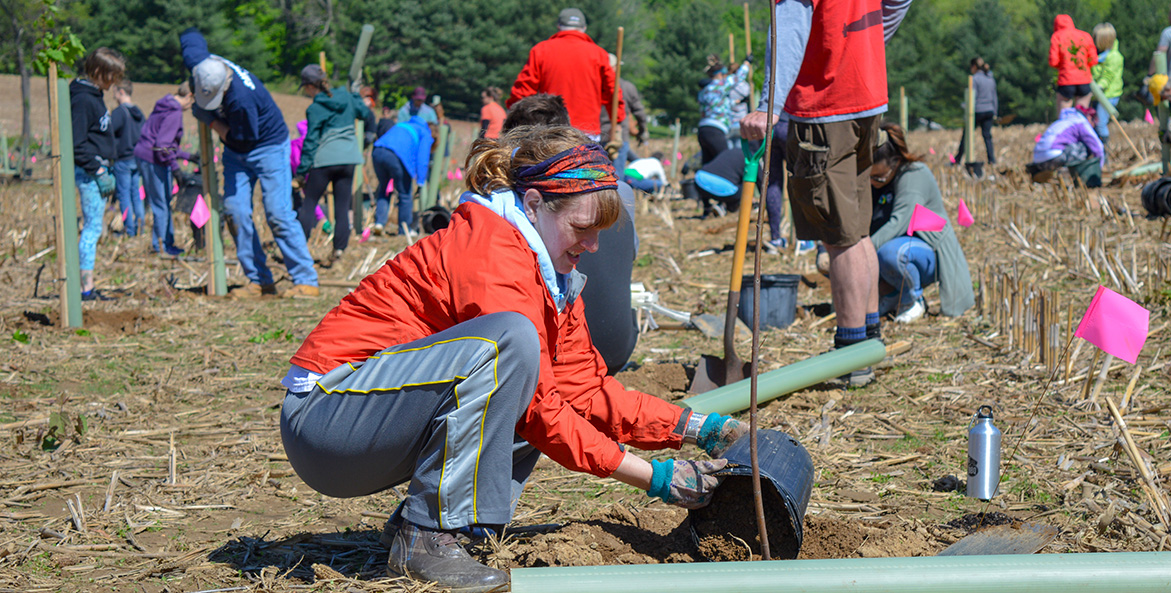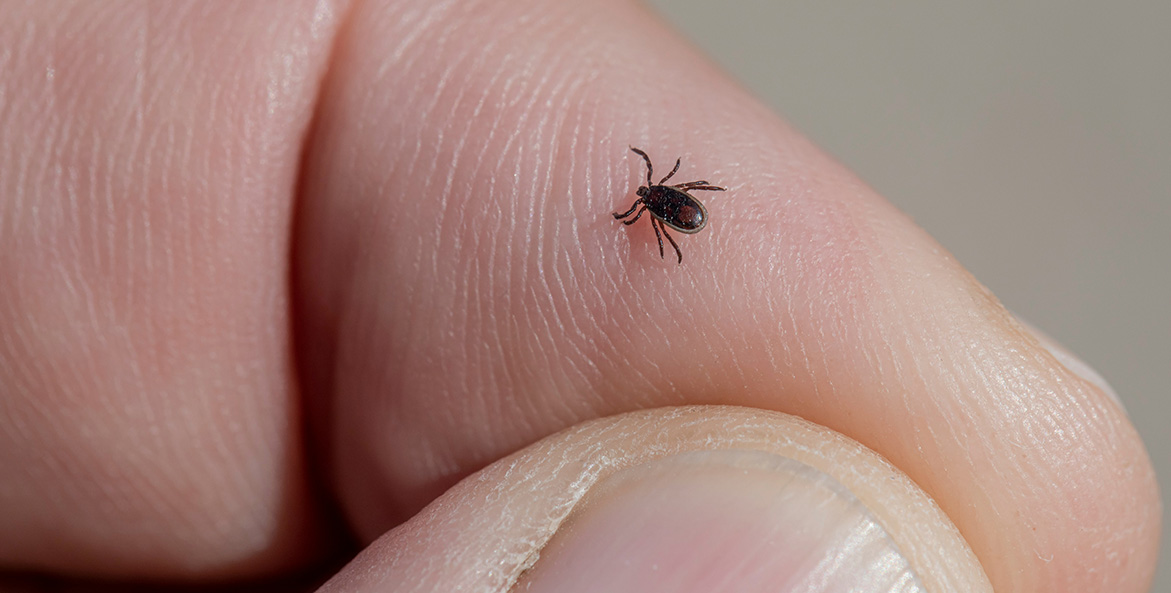For some, it might start with a headache, or perhaps a fever and a sore throat. In about 70–80 percent of cases, a distinctive rash will occur, developing a classic red ring in a “bull’s eye” pattern. This scenario—caused by the tiny but mighty tick—is becoming all too common across the United States, where Lyme disease cases have nearly doubled in the past two decades. In fact, high-risk counties have even tripled their case numbers, according to the Centers for Disease Control and Prevention (CDC). Last year, Pennsylvania led the nation in tick-borne diseases, with Lyme disease topping the list. But what exactly is behind these numbers, and what does it mean for our environment and our health?
A changing habitat
One potential contributing factor of the rise in tick-borne diseases in our region is an all too familiar culprit: climate change. Rising temperatures create a cozy haven for deer ticks, carriers of Lyme disease. These parasites thrive in temperatures above 45 degrees Fahrenheit and humidity levels exceeding 85 percent. Each year as winters become shorter and summers longer, there is a larger window in which watershed residents are vulnerable to infection. However, it's essential to recognize that while climate change is a significant factor, the spread of Lyme disease is influenced by various other factors such as human behavior and land use, as highlighted by the Fifth National Climate and Health Assessment. According to Dr. Christopher Mores, Professor and Program Director for the Global Health Epidemiology and Disease Control MPH program at the Milken Institute School of Public Health, “It’s complex. There are so many factors that could be driving changes, so it’s important we step up our surveillance efforts and ensure we’re collecting better data to notice trends over time in the context of our changing climate.”
An unwelcome host
As parasites, ticks rely heavily on finding suitable hosts, with white-tailed deer (for which the Ixodes scapularis or “deer tick” is named) topping their list of favorites. In light of the decline of many natural predators such as bobcats and coyotes, white-tailed deer populations have surged in our region. These creatures often traverse the same trails and gardens as humans, unwittingly exposing us to ticks carrying Lyme disease.
How does land use affect tick populations?
Unfortunately, it’s a common sight in communities throughout the watershed—a stretch of forested land is bulldozed to create space for a new housing development or another construction project. The resulting "forest fragmentation" creates a patchwork of suburban and forested areas, bringing common tick host species such as deer and mice in closer and more frequent proximity to humans.
Furthermore, communities of color, in particular, may experience a heightened risk of tick-borne diseases due to gentrification. As neighborhoods shift and individuals who reside in historically disinvested neighborhoods are displaced, often these individuals find themselves in areas that are prone to more ticks and tick-borne diseases like the aforementioned wildland-urban interface or the zone of transition between unoccupied land and human development.

Forest conservation and restoration can help keep ticks out of populated areas.
Rebecca Long/CBF Staff
But CBF is working to remedy this forest loss that leads to closer proximity between ticks and humans. In addition to advocating for strong forest conservation laws across the watershed, every spring, we hold numerous tree planting events throughout the region. Ticks can also take advantage of environments created by humans, thriving in areas like gardens, playgrounds, and other green spaces. For better or worse, our land-use decisions directly impact tick habitats and the potential spread of disease.
How to stay safe this tick season
As spring transitions to summer and ticks become more active, taking precautions becomes paramount. When venturing outside, even in your own yard or neighborhood, be aware that ticks live in grassy, brushy, or wooded areas. Many people encounter ticks while gardening, camping, or walking the dog. When you come back indoors, it is important to do a full-body tick check on both yourself and your pets since these parasites can latch onto many different parts of the body. Nymph ticks, or young, pre-adult ticks, can be about the size of a poppy seed—particularly hard to spot. “In terms of Lyme disease, though, we’ve got time on our side,” notes Dr. Mores. “If you find and remove a tick within a 24-hour window, you can prevent exposure to that pathogen.” Ticks can also be carried indoors on clothing—but these hitchhikers can be killed by putting your clothes in the dryer on high heat for at least ten minutes. However, prevention is always preferable. “Just do the dorky thing and tuck your pants into your socks,” recommends Dr. Mores.
What to do if you find a tick on yourself
If you find a tick on your body, don’t panic. Here are some simple steps to take:
- Grab some clean, fine-tipped tweezers and pull the tick off your skin without twisting or jerking.
- Once the tick is removed, wash the area and your hands with soap and water.
- Be sure to monitor yourself over the next few weeks for any signs of illness such as a rash or fever.
- Contact your doctor if you notice any symptoms.
Even in our complex, changing climate, there are things we can do to protect both our health and the environment. At CBF, we’re working to mitigate climate change on many fronts—from advocating for legislation that defends our watershed to planting trees. By taking collective action, we can safeguard both our health and the environment. If you’d like to take part in a tree planting this spring, visit our events calendar to find an event in your area. Just promise us you’ll do a tick check afterward!




